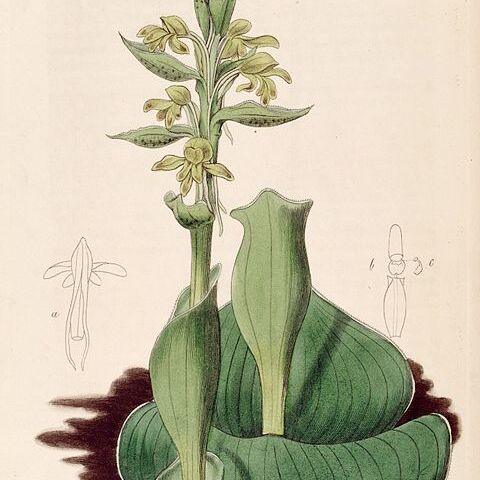Plants terrestrial, slender, 0.14-0.61 m high. Leaves 2, appressed to ground, ovate to rotund, 30-180 mm long. Inflorescence dense to lax, 4-40-flowered; bracts minutely ciliate, deflexed. Flowers pale greenish yellow, faintly tinged purple-brown; sepals and petals 1/3 fused to lip, then deflexed, oblong, obtuse. Sepals 6-9 mm long. Petals 5-8 mm long. Lip entrance facing downwards, slight apical flap not bent; spurs 10-20 mm long. Flowering time Sept., Oct.
Stout, tuberous geophyte, up to 0.6 m tall, stem with conspicuous tubular sheaths. Leaves usually 2, adpressed to the ground, ovate to rotund, bracts deflexed. Flowers many in a dense to lax raceme, pale greenish yellow, sepals 6-9 mm long, spurs 10-22 mm long. Sept.-Oct., especially after fire.
Stout, tuberous geophyte to 60 cm, stem with conspicuous tubular sheaths. Leaves usually 2, prostrate, ovate to rotund, bracts deflexed. Flowers 4-40 in a dense to lax raceme, pale greenish yellow, sepals 6-9 mm long, spurs 10-22 mm long.
An orchid.

